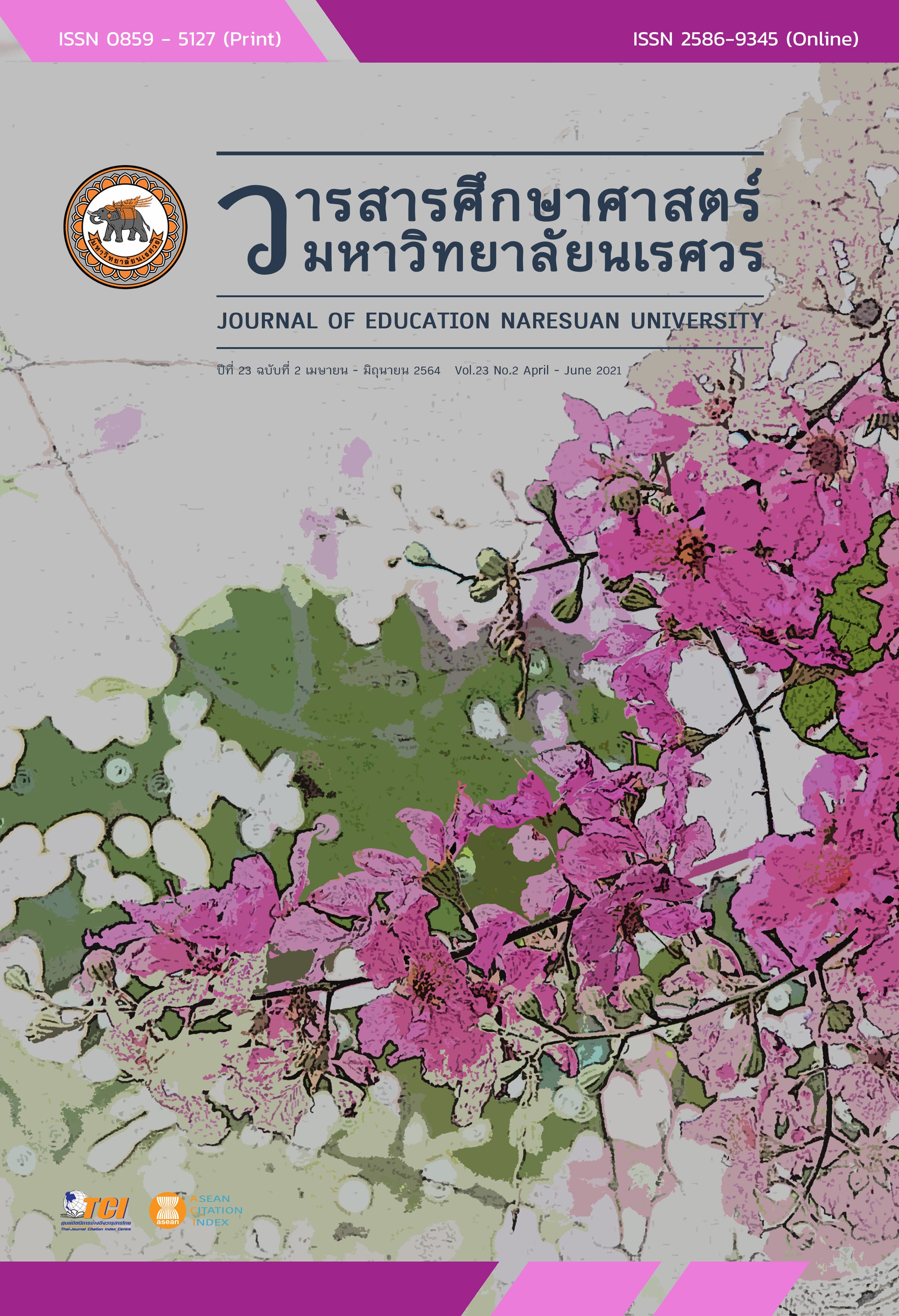USING MULTIPLE INTELLIGENCES ACTIVITIES TO ENHANCE ENGLISH READING, WRITING AND ANALYTICAL THINKING ABILITIES AMONG GRADE 9 STUDENTS การใช้กิจกรรมพหุปัญญาเพื่อเพิ่มพูนความสามารถในการอ่าน การเขียนภาษาอังกฤษ และการคิดวิเคราะห์ ของนักเรียนชั้นมัธยมศึกษาปีที่ 3
Main Article Content
Abstract
The purposes of this research were to compare students’ English reading ability, to compare analytical thinking ability and to study English writing ability after using multiple intelligences activities. The sample group was 23 grade 9 students who enrolled in Fundamental English course (English 23102) at Sridonchai Municipality School, Chiang Mai Province. The research instruments consisted of 5 lesson plans using multiple intelligences activities, an English reading test, a writing evaluation form, and an analytical thinking ability test. The data obtained were analyzed by using mean, standard deviation, and percentage. The findings of this research were as follows; 1) the students’ English reading ability increased after they learned through multiple intelligences activities, 2) the students’ English writing ability passed the pre-set criteria of 50% after they learned through multiple intelligences activities, and 3) the students’ analytical thinking ability increased after they learned through multiple intelligences activities.
Article Details
The owner of the article does not copy or violate any of its copyright. If any copyright infringement occurs or prosecution, in any case, the Editorial Board is not involved in all the rights to the owner of the article to be performed.
References
Albitz, R. S. (2007). The what and who of information literacy and critical thinking in higher education. Portal: Libraries and the Academy, 7(1), 97-109.
Association of Southeast Asian Nations. (2008). Charter of the association of Southeast Asian Nations. Retrieved January 12, 2015, from http://service.nso.go.th/nso/nsopublish/asean/files/Charter_TH+EN.pdf [in Thai]
Bloom, B. S. (1956). Taxonomy of educational objectives, handbook 1: Cognitive domain. New York: McKay.
Bureau of Academic Affairs and Educational Standards. (2008). Guiding for measurement and evaluation for learning. Bangkok: Ministry of Education. [in Thai]
Cambell, C., Cambell, B., & Dickinson D. (1999). Teaching & learning through multiple intelligences. Massachusetts: A Viacom.
Chitravellu, N., Sithamparam, S., & Choon, T. S. (1995). ELT methodology, principles and practice. Fajar Bakti: Kuala Lumpur.
Christison, M. A. (1996). Teaching and learning languages through multiple intelligence. TESOL Journal, 6(1), 10-14.
Duangloy, M. (2015). Factors affecting English reading problems of students of Rajamangala University of Technology Krungthep. Journal of Industrial Education Rajamangala University of Technology Thanyaburi, 3(1), 153-167. [in Thai]
Esther, S. P. (2012). Increasing Motivation: Introduction of MI-based Activities into EFL reading classes (Master thesis). Madrid, Spain: Complutense University of Madrid.
Gardner H. (1985). Frames of mind: The theory of multiple intelligences. New York: Basic Books.
Gardner, H. (1993). Multiple intelligences: The theory and practice. New York: Basic Books.
Habib, S., Ahmad, M., Zohreh, K., & Saeed, K. (2012). The effect of instruction based on multiple intelligences theory on the attitude and learning of general English. English Language Teaching, 5(9), 45-51.
Jing, J. (2013). Teaching English reading through MI theory in primary schools. English Language Teaching, 6(1), 132-140. DOI: 10.5539/elt.v6n1p132
Kaewta, S. (2014). The effect of using 5 easy–steps for summarizing to improve summary writing ability among Mathayomsuksa 1 students in the semester of the academic year 2014 at the Prince Royal's College. Retrieved January 15, 2015, from https://academic.prc.ac.th/TeacherResearch/ResearchDetail.php?ID=1511 [in Thai]
Lazear, D. (1991). Seven ways of teaching: The artistry of teaching with multiple intelligences. Palatine, Ill.: IRI Skylight.
Li, J., & Luca, R. D. (2012). Review of assessment feedback. Studies in Higher Education, 37(1), 1-16.
Ministry of Education. (2003). National Education Act of B.E. 2542 (1999) and the Amendments (No.2) B.E. 2545 (2002). Bangkok: Printing Express Transportation Organization of Thailand. [in Thai]
Office of the Basic Education Commission. (2008). Handbook of a competency appraisal for basic education students based on the Basic Education Core Curriculum B.E. 2551 (A.D. 2008). Bangkok: The Agricultural Co-Operative Federation of Thailand. [in Thai]
Pintupan, H. (2008). Student-centered learning: The importance of education reform. Retrieved December 26, 2017, from http://www.moobankru.com/teacharticle.html [in Thai]
Rinehart et al. (1986). Some effects of summarization training on reading and studying. Reading Research Quarterly, 21(4), 422–438.
Sinder, D. P. (2001). Multiple intelligence Theory and foreign language teaching (Doctoral dissertation). Salt Lake City, UT: University of Utah.
Thanakong, K. (2017). Using communicative language teaching activities to enhance English listening-speaking abilities and grammatical knowledge among undergraduate students. Journal of Education Naresuan University, 19(4), 51-64. [in Thai]
Torat, B. (1991). Teaching English as a foreign language. Nakhon Pathom: Faculty of Education, Silpakorn University. [in Thai]
Wilkinson, I. A. G., Soter, A. O., & Murphy, P. K. (2010). Developing a model of quality talk about literacy text. In M.G. McKeown & L. Kucan (Eds.), Bringing Reading Research to Life (pp. 142-169). New York: The Guilford Press.
Zennure, E. G., & Ismail, D. U. (2016). Effects of multiple intelligences activities on writing skill development in an EFL context. Universal Journal of Educational Research, 4(7), 1687-1697.


